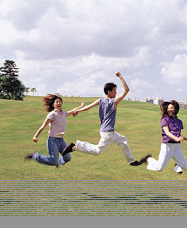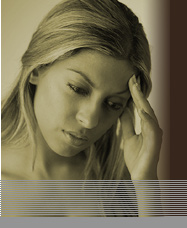Childbirth can be a stressful time and for some women it can result in a temporary hair loss condition called postpartum alopecia (also known as postnatal alopecia). The condition usually starts around two to three months after childbirth, gradually worsening for up to three months then recovering over the next three months until hair starts to re-grow. Postpartum alopecia is characterized as a general thinning (also known as diffuse thinning) over the whole scalp. This is unlike male pattern hair loss where the hairline recedes and a completely bald patch appears on the top of the scalp. Postpartum Alopecia can affect up to 90% of all mothers and the extent of hair loss can vary considerably from mild to excessive shedding.
Why does it occur? The exact cause of postpartum alopecia is still not fully understood but it is linked to the hormonal changes that occur during childbirth. During pregnancy there are increased levels of estrogen in the body which keeps the hair in the anagen growing phase resulting in temporarily thicker hair. After childbirth a withdrawal of estrogen switches off the extended growing phase and switches the hair to the catagen shedding phase resulting in the sudden excessive hair loss. It has been suggested that modern lifestyles and poor nutrition are a major factor for postpartum alopecia, but research has shown that these factors do not play a part in this condition. Can it be treated? Since postpartum alopecia is a temporary condition where the hair fully recovers there are few effective treatments available. You can consult with you local GP for advice but you will probably be advised that there is nothing to worry about due to it being part of the natural postpartum process.
The best that can be done is to try not to exacerbate the condition so that no more hair loss than necessary occurs. To help maintain your hair during this period you should try and avoid hair styles with plaits, pigtails, braids and using tight hair rollers that tend to pull the hair. Also avoid using hot blow dryers and heated hair strengtheners as these can also put excessive stress on the hair.
After washing always try to pat the hair dry with a good quality bath towel, hair is always more fragile when wet so try not to rub the hair vigorously. Eating a healthy diet that includes fresh fruit and vegetables can also play an important part in trying to maintain the hair. Fruit and vegetables contain flavonoids which are thought to encourage stronger hair growth by strengthening the small blood vessels supplying the hair follicles.
Diet supplements are also known to help with hair growth and these can be used to help treat postpartum alopecia. The most effective vitamin supplements are Biotin, Vitamin B complex, Vitamin C, Vitamin E, and Zinc and these are readily available in multivitamin capsules. Finally there are a range of hair loss shampoos that may help to reduce hair loss in some cases but these are not generally guaranteed to help with postpartum alopecia. The most important thing to remember about postpartum alopecia is try not to worry too much, it is only a temporary condition and it will eventually stop.
To read further articles by John Tulley click here: Hair loss directory.
To download a free copy of John Tulleys' brand new e-book, "Hair Loss Treatments: How to Stop Hair Loss and Regrow Your Hair!", click here: Hair Loss Treatments Report


